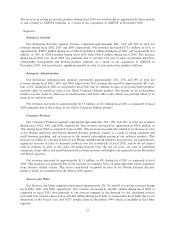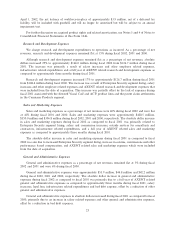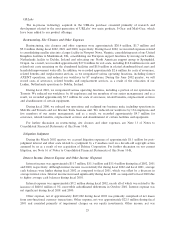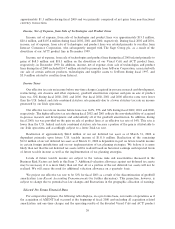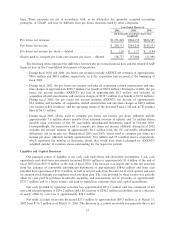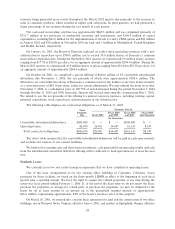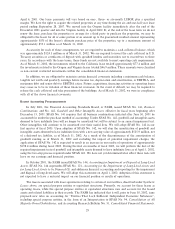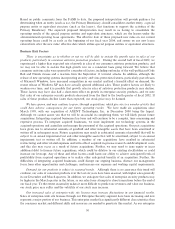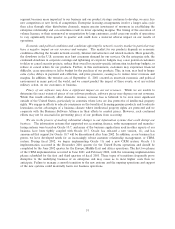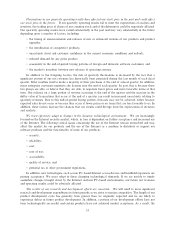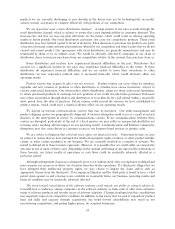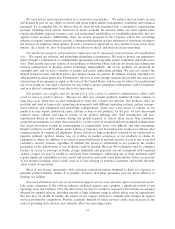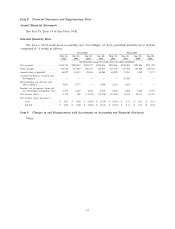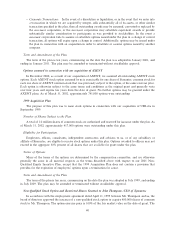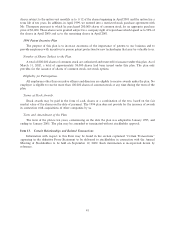Symantec 2002 Annual Report Download - page 53
Download and view the complete annual report
Please find page 53 of the 2002 Symantec annual report below. You can navigate through the pages in the report by either clicking on the pages listed below, or by using the keyword search tool below to find specific information within the annual report.segment becomes more important to our business and our product strategy continues to develop, we may face
new competitors or new levels of competition. Enterprise licensing arrangements involve a longer sales cycle
than sales through other distribution channels, require greater investment of resources in establishing the
enterprise relationship and can sometimes result in lower operating margins. The timing of the execution of
volume licenses, or their nonrenewal or renegotiation by large customers, could cause our results of operations
to vary signiÑcantly from quarter to quarter and could have a material adverse impact on our results of
operations.
Economic and political conditions and conditions aÅecting the network security market in particular may
have a negative impact on our revenues and margins. The market for our products depends on economic
conditions aÅecting the broader network security, Internet infrastructure and related markets. More generally,
the slowdown in the U.S. economy may hurt consumer demand for our services. On the enterprise side, the
continued slowdown in corporate earnings and tightening of corporate budgets may cause potential customers
to delay or cancel security projects, reduce their overall or security-speciÑc information technology budgets, or
reduce or cancel orders for our products. Further, in this environment, customers may experience Ñnancial
diÇculty, cease operations or fail to budget for the purchase of our products. This, in turn, may lead to longer
sales cycles, delays in payment and collection, and price pressures, causing us to realize lower revenues and
margins. In addition, the terrorist acts of September 11, 2001 created an uncertain economic and political
environment in many parts of the world, and we cannot predict the impact of these events, or of any related
military action, on our customers or business.
Piracy of our software may have a signiÑcant impact on our net revenues. While we are unable to
determine the exact extent of piracy of our software products, software piracy may depress our net revenues.
While this would adversely aÅect domestic revenue, revenue loss is believed to be even more signiÑcant
outside of the United States, particularly in countries where laws are less protective of intellectual property
rights. We engage in eÅorts to educate consumers on the beneÑts of licensing genuine products and to educate
lawmakers on the advantages of a business climate where intellectual property rights are protected and we
cooperate with the Business Software Alliance in their eÅorts to combat piracy. However, such continued
eÅorts may not be successful in preventing piracy of our products from occurring.
We are in the process of making substantial changes to our information systems that could disrupt our
business. The information systems that supported our accounting, Ñnance, order management and manufac-
turing systems were based on Oracle 10.7, and many of the business applications used in other aspects of our
business have been tightly coupled with Oracle 10.7. Oracle has released a new version, 11i, and has
announced that support for Oracle 10.7 will be discontinued after June 2002. In addition, as our business has
grown, we have developed needs for an increasingly robust customer relationship management, or CRM,
system. During Ñscal 2002, we began implementing Oracle 11i and a new CRM system. Oracle 11i
implementation occurred in the December 2001 quarter for the United States operations and should be
completed by the June 2002 quarter for the Europe, Middle East and Africa operations. The Ñrst two phases
of the CRM implementation occurred in June 2001 and February 2002, with the remaining implementation
phases scheduled for the Ñrst and third quarters of Ñscal 2003. These types of transitions frequently prove
disruptive to the underlying business of an enterprise and may cause us to incur higher costs than we
anticipate. Failure to manage a smooth transition to the new systems and the ongoing operations and support
of the new systems could materially harm our business operations.
31


